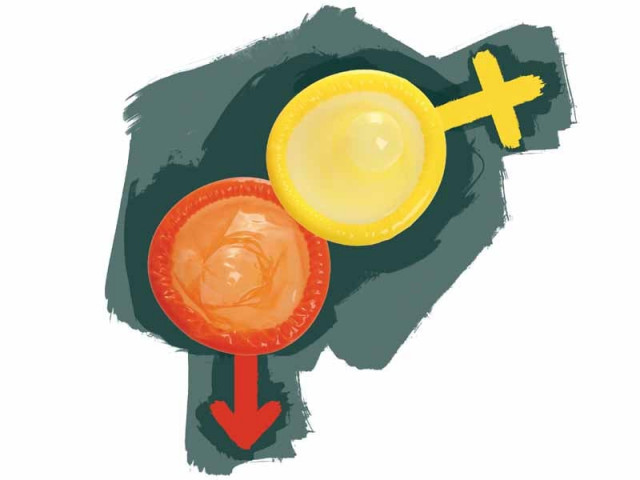In Sindh’s cities, safe sex sermons have kept HIV/AIDS out of sight
Successful programmes to educate sex workers has worked wonders to keep them safe.

In Sindh’s cities, safe sex sermons have kept HIV/AIDS out of sight
Female sex workers operating in Karachi, Hyderabad and Sukkur have low HIV prevalence rates - although this is a statistic that could change either way if government programmes are pulled.
A cross-sectional study conducted for the Canada-Pakistan HIV/AIDS Surveillance Project mapped the number of female sex workers in these three cities during 2005 and 2006.
Of the 14,900 female sex workers working in Karachi, Hyderabad and Sukkur, 1,158 workers were interviewed for the project. The findings of the study challenge several stereotypes associated with the sex trade.
For one, HIV was not rife among sex workers and they had knowledge about safe sex practices. Condom use at the last sexual act was highest among brothel-based workers in Karachi - 68% of those surveyed - but lowest in Sukkur.
The sex workers were also tested for HIV. Only three from Karachi – one based on the street and two out of kothi khanas/homes – tested positive. In Hyderabad and Sukkur, no sex workers tested positive for HIV.
The study also notes that even though heterosexual contact is the most common mode of HIV transmission globally, in Pakistan the use of injection drugs has been the main mode of transmission since 2004.
Intervention programmes
The study’s authors link the use of condoms by sex workers to the intervention programmes. In Hyderabad and Karachi, there has been a service delivery programme since around 2004.
According to author Arshad Altaf, “Condom use was low among female sex workers in Sukkur because there was no intervention on the ground for them whereas in Karachi a programme targeting female sex workers was functional. So a targeted programme does make a difference.”
The study also notes that the programmes were focused on the brothels because of convenience and easy access. For example – only 30% of the street-based sex workers knew of the programme but more than half of those based at home or kothi khanas had engaged with the programme.
The ease of access is also because there is a key contact at homes – such as a ‘madam’ or an ‘auntie’ - whereas street female sex workers tend to keep a low profile. As a result, reported condom use in the last sexual act by street-based female sex workers was 12.3%.
There is also an intervention programme in place at Karachi’s jails. A 2009 study on the prevalence of HIV among jail inmates in Sindh stated that the “the overall prevalence of HIV in jail inmates was one per cent.”
However, the use of injection drugs impacted this. According to this study, by members of AIDS control programmes run by the World Health Organisation and the Sindh government, “The high figure of 2.8% of HIV in Karachi Landhi Jail is due to large number of drug users in this jail, which is reflective of the overall high prevalence in this risk group.”
Altaf also told The Express Tribune that “any HIV prevention programme for high-risk groups for HIV/AIDS, including female sex workers, should be well-organised with emphasis on effective coverage ie reaching the maximum number of persons. The programme should have an adequate number of trained outreach workers or peer workers. The importance of peer outreach workers cannot be undermined for any HIV prevention programme.”
Published in The Express Tribune, August 7th, 2012.



















COMMENTS
Comments are moderated and generally will be posted if they are on-topic and not abusive.
For more information, please see our Comments FAQ